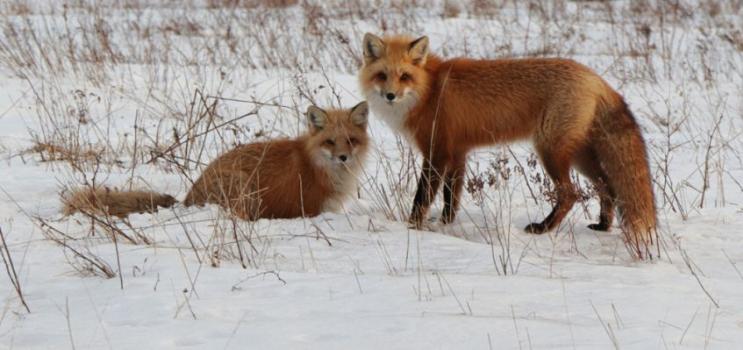Abandoned or Lost Young Animals

When people come in contact with young mammals or birds that seem to be abandoned or lost, it is human nature to step in and try to help. Often these animals are found near homes or cottages and in places where we walk, cycle and enjoy nature.
This instinct to "help" can often be detrimental to the young animals and at times, to the person who steps in. Before you act, please consider the following tips for dealing with young wild animals
Are they actually lost or abandoned?
In most cases the answer is NO.
While they may seem to be abandoned, it is common for many mammals to leave their young alone while they forage for food. They know where they left their young, so before you handle or remove them, consider the following points:
- some parents may be aggressive toward people who come into contact with and/or handle their young
- handling the young can transfer strange smells to their fur. Some species may reject their young if the scent is wrong
- moving them to another area can make it harder for the parents to find them and increase the chances of predation.
Are there health issues related to handling wild animals?
YES. As part of the natural cycle of population control, each species has its own diseases and parasites. Handling wild animals can transmit serious infections and illnesses to people or may even cause death from:
- viral diseases
- bacterial diseases
- fungal infections
- tape worms and hook worms
- fleas and ticks and other insects
Are there places that take in "abandoned" young animals?
NO. The most commonly "abandoned " mammals are raccoons, snowshoe hare, foxes and skunks. These species have healthy, stable populations that do not require extra conservation efforts.
Some people will move these animals to another area but this can put unnecessary stress on the existing population and on occasion, can introduce diseases or parasites into the release area. For animals such as skunks, releasing them elsewhere just transfers the problem to someone else.
Can these animals be easily domesticated?
NO. Most wild creatures are difficult if not impossible to properly domesticate. Difficulties can range from an inability to housebreak the animal, to scratching and biting, damage to household furnishings, loud cries and hostile reactions to strangers.
These animals are naturally adapted to living in the wild but they must learn survival skills from their parents. Keeping young animals as pets prevents them from learning how to survive on their own and makes them much more dependent on people for food and shelter. This can lead to problems in other areas if they are released back into the wild.
It is also illegal to own or possess wildlife on PEI without proper permits.
Can people feed young animals?
NO. It is natural for wildlife populations to produce more young each year than the habitat can support.
Feeding young wildlife, particularly mammals, can lead to overcrowding and increased competition for space and local wild food supplies. The increased population may introduce new diseases and parasites to the area and can often create nuisance problems for the people who live there.
Are there legal issues?
YES. Wild animals cannot be kept in captivity. Doing so can result in fines and/or legal costs.